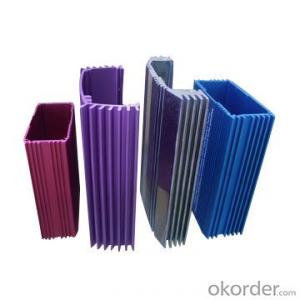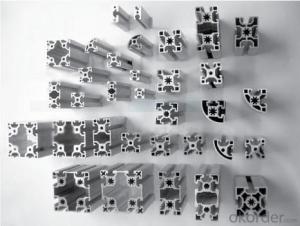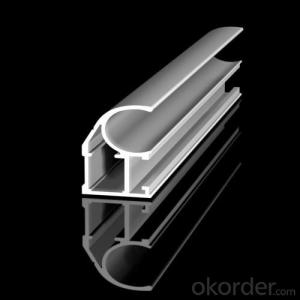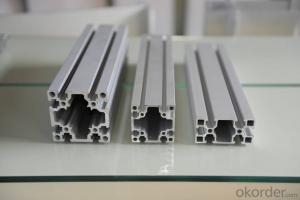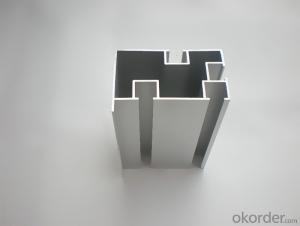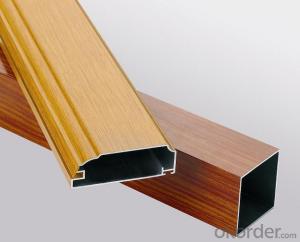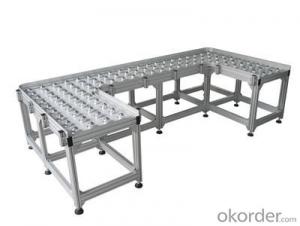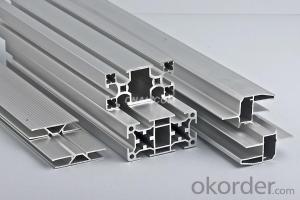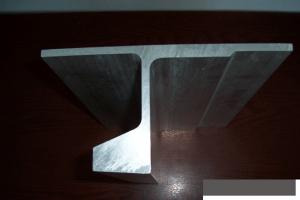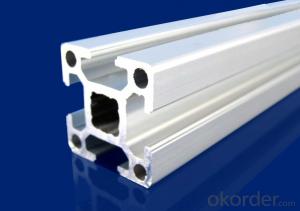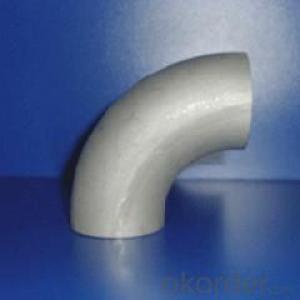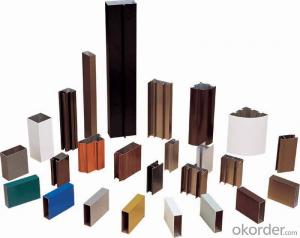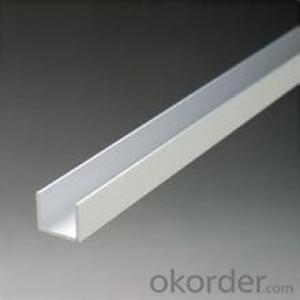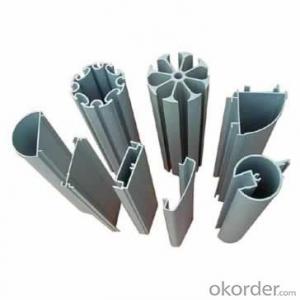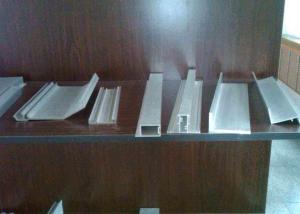Aluminum Extrusion Profiles Los Angeles - 6060, 6061, 6063, 6082 Grade Aluminium Profile Manufacturer
- Loading Port:
- China Main Port
- Payment Terms:
- TT OR LC
- Min Order Qty:
- -
- Supply Capability:
- -
OKorder Service Pledge
Quality Product, Order Online Tracking, Timely Delivery
OKorder Financial Service
Credit Rating, Credit Services, Credit Purchasing
You Might Also Like
Material | Alloy 6063,6061,6005or according to customer’s choice |
Temper | T3, T4, T5, T6 |
Surface | Anodize, electrophoresis, powder coating, PVDF coating, wood grain painting, matted, etc. |
Color | Any colour based on Standard Germany RAL Mark |
Length | Coating 6.5 meters, Anodizing 6.5 meters, Mill finish 5 meters |
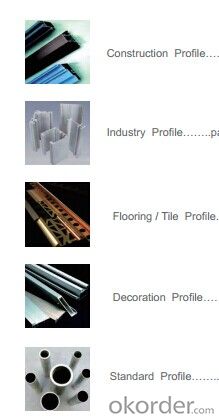
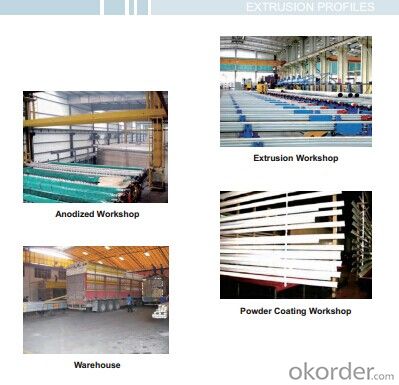
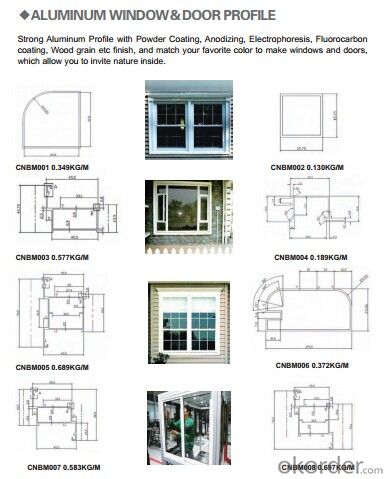
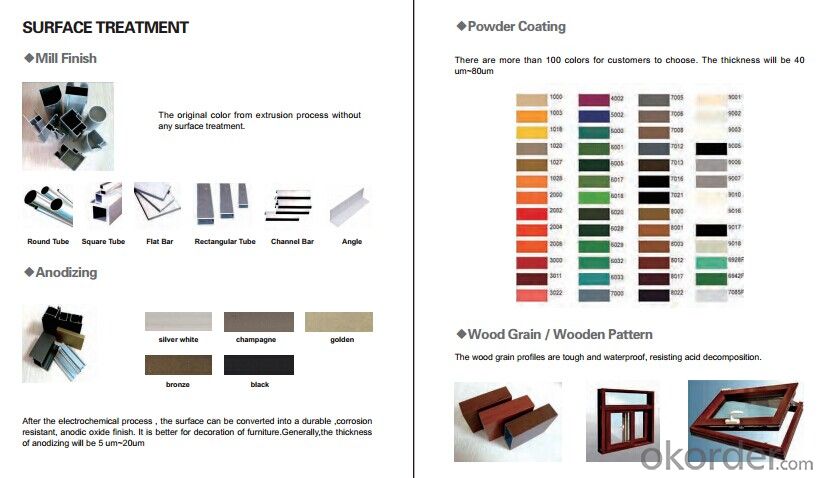
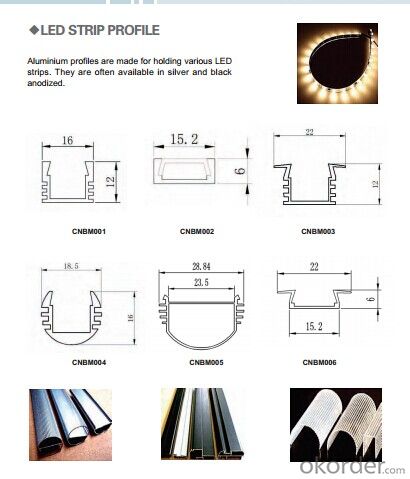
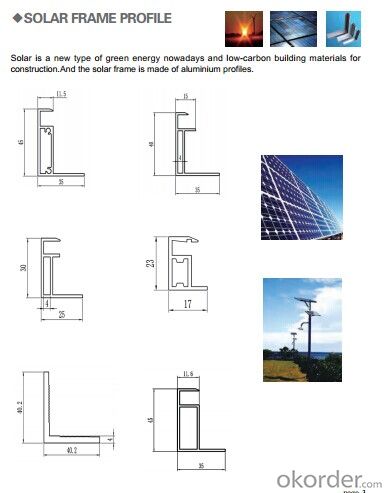
- Q: What is the aluminum section table?
- Aluminum frame is used to do the frame, console ah. Jing Teng aluminum professional undertake assembly line workbench ~!
- Q: Can someone give me a direction? Thank you
- First of all, the country's biggest industrial enterprise profile Liaoning Zhongwang Liaoyuan Midas Shandong Shandong Hunan Guangxi South Nanshan jungle Sheng Tong Guangdong Luxe Guangdong and the United States they have or will soon be launched high-speed EMU industrial aluminum productsSecondly, the radiator done the best Guangxi south south aluminum, but the radiator specification too, radiator section do few enterprises, the majority of enterprises in the decentralized radiator, small cross section, you have to search.The best solar energy company is Jiangsu's Hyde aluminum, energy aluminum enterprises concentrated in Jiangsu and Zhejiang, it is recommended search.Mechanical equipment is divided into manufacturing machinery and medical equipment manufacturing machinery, aluminum is not much, much maintenance need new materials will purchase, medical devices are mostly aluminum fittings and seamless pipe, little section, which can satisfy the production enterprises can do.Transport can be divided into passenger cars and commercial vehicles in two categories, now on the domestic market of aluminum on the vehicle in popularity is also very slow, promotion is difficult, this is not a salesman to project, to promote the use of a wide range of industry to the understanding, or executive strategy, and promote the country policy......The one or two sentence that is not clear, industry market is still relatively confused, capacity is already saturated, according to the perspective of industrial development, 120% saturated, is conducive to healthy competition, eliminating inferior enterprises, promote the development of technology, but has been more than 150% saturated capacity in China, most are small extrusion machine for the production of building, 70% how to develop materials, industry, still have to see your company's positioning and strategic development.
- Q: Can aluminum profiles be used in curtain wall systems?
- Yes, aluminum profiles can be commonly used in curtain wall systems. Aluminum is a lightweight, durable, and corrosion-resistant material, making it suitable for constructing curtain walls. Its versatility allows for various design options and structural support, making it a popular choice in the construction industry.
- Q: Can aluminum profiles be used for greenhouse construction?
- Yes, aluminum profiles can be used for greenhouse construction. Aluminum is a lightweight yet strong material that is resistant to corrosion, making it ideal for outdoor structures like greenhouses. It is also easy to work with, allowing for flexibility in design and construction. Additionally, aluminum profiles provide excellent thermal properties, which can help regulate temperature and improve energy efficiency within the greenhouse.
- Q: How do you ensure proper weatherproofing with aluminum profiles?
- To achieve effective weatherproofing with aluminum profiles, there are several essential measures that can be implemented. Firstly, it is crucial to opt for aluminum profiles of superior quality that are specifically designed to withstand weather conditions. These profiles should undergo a suitable finishing process or be coated to safeguard against corrosion and weather-related factors. Subsequently, it is important to adhere to proper installation techniques to ensure a secure and tight fit. This entails accurately aligning and connecting the profiles using appropriate fasteners or adhesives. Any gaps or openings between the profiles should be sealed using weatherproofing materials like silicone or rubber gaskets to prevent the infiltration of water or air. Moreover, careful attention must be given to the design and construction of the aluminum profiles. This includes incorporating features such as sloped surfaces, drip edges, and drainage systems to facilitate the runoff of water and prevent the accumulation or pooling of moisture. Additionally, provisions should be made to address thermal expansion and contraction, as these factors can impact the effectiveness of the weatherproofing. Regular maintenance plays a vital role in ensuring long-lasting weatherproofing. It is essential to conduct periodic inspections to identify any signs of wear, damage, or deterioration in the profiles or their weatherproofing components. Prompt action should be taken to rectify any issues through repairs or replacement to maintain the integrity of the weatherproofing system. In conclusion, by selecting high-quality aluminum profiles, adhering to proper installation techniques, incorporating appropriate design features, and conducting regular maintenance, it is possible to achieve effective weatherproofing and enhance the durability and performance of aluminum profiles against weather elements.
- Q: This question asks for an explanation of the various types of aluminum profiles that are specifically used in the manufacturing and construction of windows and doors.
- <p>Aluminum profiles for windows and doors come in various types, each serving specific functions and designs. Common types include: 1) Casement profiles, used for side frames and meeting stiles in casement windows; 2) Mullion profiles, for vertical and horizontal structural members in window walls; 3) Transom profiles, used in the top or bottom of windows to support glazing; 4) Sash profiles, forming the main frame of the window sash; 5) Threshold profiles, used at the bottom of doors for weather sealing; 6) Header profiles, supporting the top of a door or window opening; and 7) Specialty profiles, designed for specific architectural needs like corner posts or decorative elements. Each profile is engineered for strength, durability, and compatibility with glazing and浜旈噾閰嶄欢.</p>
- Q: What are the anti-static properties of aluminum profiles?
- Aluminum profiles possess excellent anti-static properties due to their inherent electrical conductivity. This conductivity allows them to easily dissipate static charges and prevent the accumulation of static electricity. As a result, aluminum profiles are widely used in applications where static electricity can cause damage or pose a safety hazard. These profiles can be found in industries such as electronics, automotive, aerospace, and manufacturing, where they are used for applications such as conveyor systems, protective enclosures, and grounding components. The anti-static properties of aluminum profiles ensure a safe and reliable operation by minimizing the risks associated with static electricity, including electrostatic discharge (ESD) damage, fire hazards, and interference with sensitive electronic equipment.
- Q: How many tons of aluminum can be produced by a ton of aluminium ingots?
- Firstly, according to the requirements of a ton of aluminum ingot made of different aluminum alloy rods, concrete can output many aluminum rods must be based on the company's standard, but personally think that a ton of aluminum rod is absolutely not up to a ton of waste in the section product, because in the process of consumption, waste can not be calculated in the product section in.
- Q: Can aluminum profiles be used for stage and truss structures?
- Yes, aluminum profiles can be used for stage and truss structures. Aluminum is a lightweight and durable material that is commonly used in the construction of stage and truss systems. It has excellent strength-to-weight ratio, making it ideal for supporting heavy loads while minimizing the weight of the overall structure. Additionally, aluminum is corrosion-resistant, which is important for stage and truss structures that are often exposed to outdoor elements. Aluminum profiles can be easily assembled and disassembled, allowing for flexibility and ease of transportation. Overall, aluminum profiles are a popular choice for stage and truss structures due to their strength, lightweight nature, durability, and ease of use.
- Q: This question asks about the various methods for connecting aluminum profiles using fasteners.
- <p>There are several ways to join aluminum profiles together using fasteners: 1. Bolts and Nuts: Commonly used for strong and removable connections. 2. Rivets: Provide a permanent connection, suitable for high-stress applications. 3. Screws: Offer a secure and adjustable connection, often used in furniture and construction. 4. Pins: Used for alignment and positioning, often in lighter applications. 5. Adhesives: Can be used for a more aesthetically pleasing joint, though not as strong as mechanical fasteners. 6. Welding: Although not a fastener method, it is a common way to join aluminum profiles for a permanent and strong bond. Each method has its advantages and is chosen based on the specific requirements of the application, such as strength, permanence, and ease of assembly.</p>
Send your message to us
Aluminum Extrusion Profiles Los Angeles - 6060, 6061, 6063, 6082 Grade Aluminium Profile Manufacturer
- Loading Port:
- China Main Port
- Payment Terms:
- TT OR LC
- Min Order Qty:
- -
- Supply Capability:
- -
OKorder Service Pledge
Quality Product, Order Online Tracking, Timely Delivery
OKorder Financial Service
Credit Rating, Credit Services, Credit Purchasing
Similar products
Hot products
Hot Searches
Related keywords
